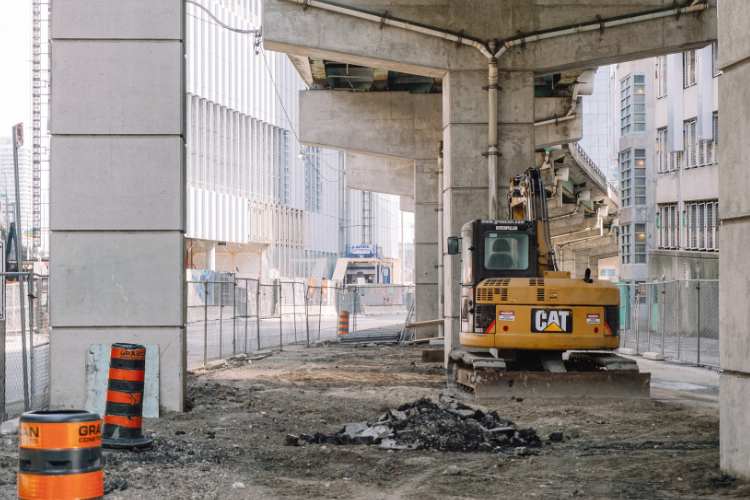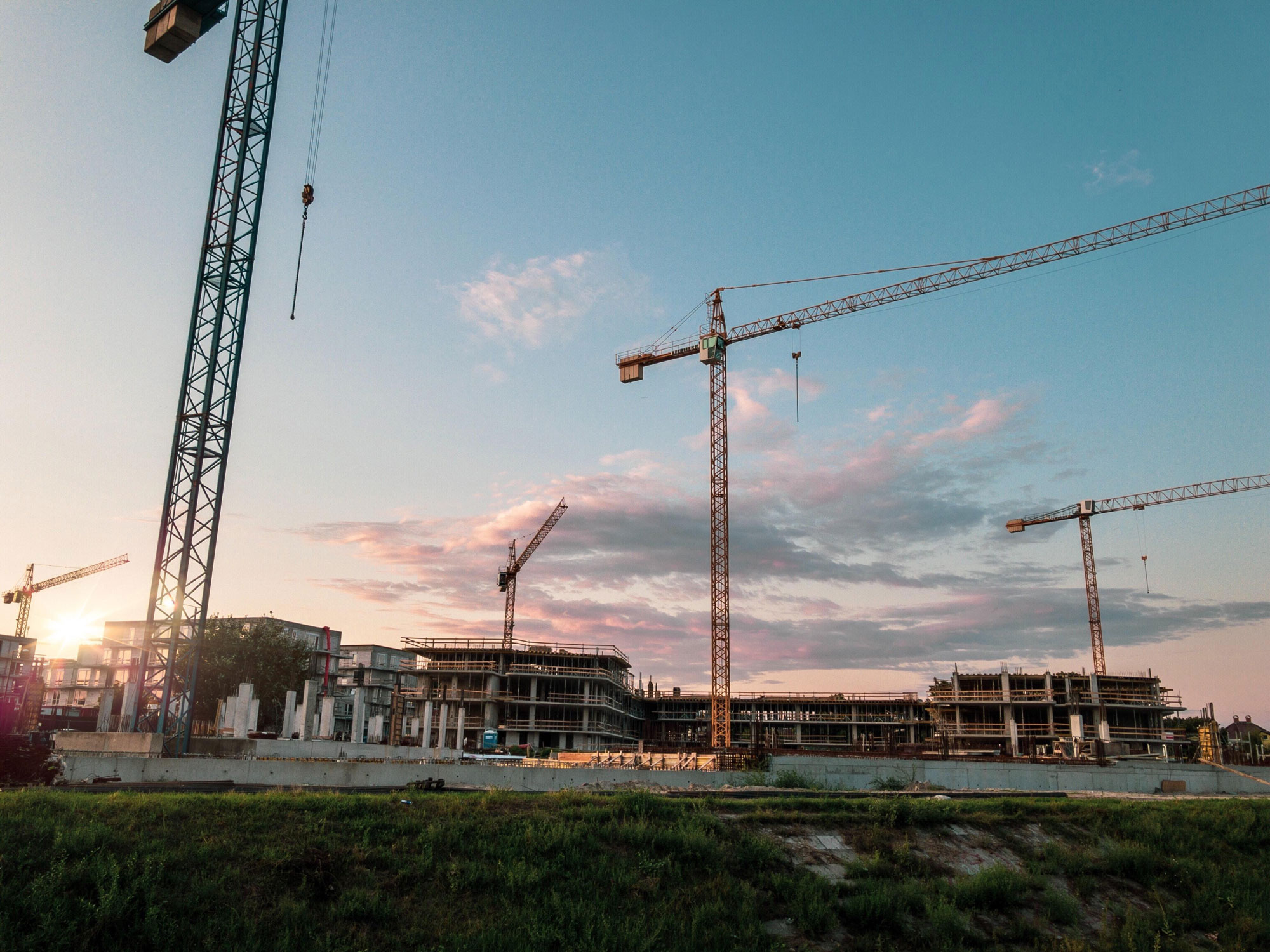Many aspects of construction are well understood, prevalent and in need of improvement – but it’s rare to take a step back from high-pressure projects to discuss them honestly. When Billd launched their Roundtable series, they wanted to break down those communication barriers, inviting a GC, a subcontractor and a developer to get real about the state of the industry. In each Roundtable discussion, Matt DiBara of DiBara Masonry, Doug Roberts of Panattoni Development and Anthony Walton of DPR dive into the patterns and dynamics that are hurting the industry, and how they can be fixed. Robbie Reynolds of Billd facilitates the discussion. Billd has released a total of three Roundtable series, each of which we’ll dive into below:
Table of Contents
Roundtable Series 1: The Things We Know Happen in the Industry, But Don’t Talk About
Discussion 1: Why It Takes So Long to Pay Subs
DiBara, Roberts and Walton discuss the complex dynamics of payment delays, and emphasize the sub’s dependence on the GC’s efficiency in processing payments. GC: Walton advocates for the GC perspective, explaining that it’s not like he’s receiving 27 separate checks to help him meet the individual payment expectations of every sub’s pay app. He’s only being paid once – which leads to payment delays. Sub: Dibara counters with the fact that it’s easy to tuck the issue of subcontractor payment timelines aside when you know the sub is just going to “take it.” It’s not as simple as advocating for themselves, because subs have a lot at stake if they choose to escalate a payment issue. Escalation could mean leaving a project and involving a legal team, which in turn wrecks a GC relationship. It’s hard for the sub to know when a payment delay is worth that. Biggest Takeaway for Subcontractors: The most important takeaway for subcontractors is that they shouldn’t take payment issues lying down. They must have mechanisms in place to escalate these issues when necessary, and define specific parameters that demand them to take action on an unacceptable delay. This might mean proactive conversations, asking questions like: “If you are behind on payments, say 45 or 60 days, how do you think I should handle it?” That way, when issues come up, you have a pre-approved escalation process.
Discussion 2: Sacrificing Quality for Cost
In this conversation, the participants dive into how the industry has shifted from a traditional emphasis on craftsmanship to an almost soulless emphasis on speed and cost-cutting. When this is the case, developers may be compelled to use low quality subs just to save money. Overall, the industry is struggling to find a balance between profitability and maintaining the high quality of work that we can still see in yesterday’s structures. With profitability on the line, the industry is faced with a “You can only choose two” dilemma between service, quality and price. Biggest Takeaway for Subcontractors: Subcontractors shouldn’t be afraid to advocate for quality craftsmanship and work collaboratively with developers and general contractors to ensure that both financial and quality goals are met in construction projects. They should also focus on building and maintaining a reputation for delivering exceptional work, as this can lead to long-term success and opportunities in the industry.
Discussion 3: The Human Cost of Accelerating Schedules
This discussion focuses on the accelerating schedules in the construction industry and the factors driving this trend. The three participants explore the potential consequences of this schedule pressure and the need for adaptation. In recent years, a low capitalization rate environment (which is now no longer the case) incentivized more development, which meant more work could get through, quickly. The pressure to meet accelerated schedules has become common, driven by the need to generate revenue fast and stay competitive in the market. This practice can lead to situations where unrealistic expectations are placed on subcontractors, which isn’t sustainable. The new generation may be placing a greater emphasis on mental health so that this burden isn’t continually put on GCs and subs. Biggest Takeaway for Subcontractors: To adapt and succeed in this environment, subs need to focus on technological advancement, team recruitment and retention , and work-life balance. It’s crucial to have uncomfortable conversations with GCs about the feasibility of schedule demands, find ways to work smarter, and ensure the well-being of their teams. Otherwise, you risk burning out employees and crews.
Roundtable Series 2: The Things that Make It Hard to Trust Each Other, Even Though We Need Trust to Get Shit Done
Discussion 4: Subs Not Knowing When They’ll Get Paid
This talk centers on the real world consequences of subs having little to no certainty around when their payments will come in. The participants acknowledge that 84% of the industry is not paid within 30 days. This delay is attributed to payment term issues, with subs typically operating on “pay when paid” contracts, where they only get paid when the general contractor is paid by the owner. The conversation highlights how not getting timely payments can be a barrier to trust and to the continuation of a relationship. Subs have to constantly ask themselves questions like “Do we want to terminate this relationship to get paid?” They know they did the work correctly, but payment delays persist. Biggest Takeaway for Subcontractors: The critical takeaway for subcontractors is the need to address and advocate for improved payment practices in the industry. If you think you’re the only one dealing with on-time payment issues, you’re not; DiBara’s experience speaks to the fact that this is a pervasive problem, one you shouldn’t be afraid to speak up about. This may mean looking at external financing options and increasing your bids to cover the cost of them.
Discussion 5: Competing in a Low Bid Market
This Roundtable revolves around the strain that low bid markets place on developers, general contractors, and subcontractors:
- The participants go over the difficulty in telling the truth about project costs and timelines when bidding for work, for fear of losing the job.
- GCs, on the other hand, may sometimes neglect conversations about flaws in the plans until after subcontractor bids are submitted, which can lead to frustration and a breakdown in trust.
But the reality is that subs and GCs usually have to take low bid jobs to keep their teams busy, knowing full well the challenges they present. Biggest Takeaway for Subcontractors: Getting out of a low bid marketplace and into more negotiated or higher-margin work means asserting your unique value, specializing in particular niches, and over-communicating with clients to encourage mutual trust.
The Misaligned Goals That Pit Us Against Each Other, Despite Being on the Same Team:
Discussion 6: Who Has The Most Risk on a Construction Project?
The discussion focuses on the concept that GCs, who are often considered professional risk managers, usually bear a significant portion of the overall project risk. However, subcontractors also take on substantial risk, because it’s their dollars that get fronted to complete a project. The conversation highlights how GCs tend to focus on minimizing risk, but because subcontractors are tasked with financing projects, they often shoulder more risk than might be evident. That dynamic gets even more complicated when you factor in retainage. Biggest Takeaway for Subcontractors: Subcontractors should recognize that they play a vital role in project risk management, as they often finance a significant portion of the project and are essential to its execution. While GCs may be professional risk managers, subcontractors should take proactive steps to consult legal teams and implement strategies to offset and mitigate risk effectively. This may involve setting clear expectations in contracts and communicating openly with GCs to ensure a fair allocation of risk and compensation for their contributions to the project’s success.
Discussion 7: The Flow Down of Profit
This Roundtable highlights the tension between GCs and subcontractors when it comes to pricing and profit margins. They discuss the competitive nature of pricing, especially in low bid markets, and how it can lead to issues when GCs aim to scrutinize subcontractor work and reduce their payments to maximize their own profit margins. This practice can significantly affect subcontractors, especially when they are negotiating change orders and attempting to deliver quality work while facing financial constraints. Biggest Takeaway for Subcontractors: Subcontractors need to be aware that GCs may sometimes engage in practices to reduce subcontractor payments to boost their own profit margins. Having a healthy working relationship with GCs can help mitigate some of the inherent tensions related to pricing and profit margins, allowing subcontractors to assert that the way they’ve priced things out is valid and necessary. While you may have to take on low bid work, you do not have to work with GCs if you suspect they are making their margin out of your margin. There is other work you can win.
Discussion 8: How to Fix the Broken Repayment Chain for Subs
DiBara, Roberts and Walton re-explore the issue of payment terms, particularly those dicey “pay-when-paid” clauses and how unfair they are. Subs have expressed their frustration here, explaining that these payment terms can create significant cash flow challenges, especially when project owners delay payments to the GC. They assert that more transparent, standardized payment terms in the industry would help subs maintain better financial stability. It’s suggested that subs might consider incorporating factors like interest rates into their base bids to help mitigate the risks associated with payment delays, as long as they could get the contract to enforce their ability to charge interest. Overall, the participants recognize that alternative forms of financing, like factoring and material financing, can be useful tools for subcontractors to manage their cash flow and execute projects more efficiently. Walton expresses an open-minded view, stating that subcontractors using alternative financing methods, when needed, should not be viewed negatively. Biggest Takeaway for Subcontractors: The key takeaway for subcontractors here is that they shouldn’t bear the sole responsibility of fronting costs when they haven’t been paid. To combat this, they can add the cost of financing into their bids, advocate for more transparent payment terms in contracts and explore alternative financing options to improve their cash flow. These strategies can help subcontractors navigate the payment challenges within the construction industry, ensuring financial stability and resilience.







